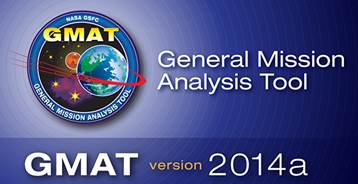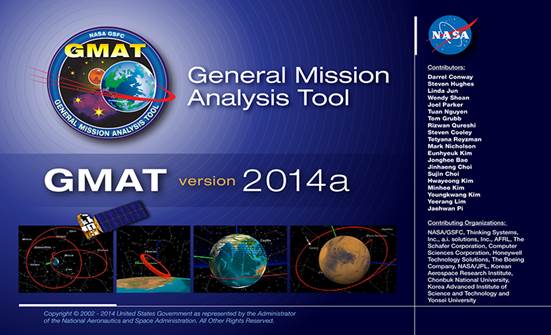Announcing GMAT R2014a
Do you want to go to Mars but don't know when to leave or how much to bring? Do you want to study Earth protection by planning a mission to a near-Earth asteroid? Do you want to place a telescope in an orbit that is always looking outwards from the Earth and Sun? The General Mission Analysis Tool (GMAT) is an open-source space mission design tool to help you answer these and many other space flight challenges. GMAT is developed by a team of NASA, private industry, and public and private contributors. It is used for real-world engineering studies, as a tool for education and public engagement, and to fly operational spacecraft. You can download GMAT here: Windows Installer , Source Code.
GMAT R2014a is the second official, production-quality release of GMAT. It is rigorously tested with nearly 12000 automated scripts tests executed nightly and over 3400 automated GUI tests executed weekly, and features nearly 700 pages of quality end user documentation. GMAT has been used to support the TESS (Transiting Exoplanet Survey Satellite), LCROSS (Lunar Crater Observation and Sensing Satellite), ARTEMIS (Acceleration, Reconnection, Turbulence and Electrodynamics of the Moon’s Interaction with the Sun) , LRO (Lunar Reconnaissance Orbiter), MMS (Magnetospheric Multiscale Mission), and OSIRIS-REx (Origins Spectral Interpretation Resource Identification Security Regolith Explorer) missions and numerous mission concepts.
Here are a few of the changes and improvements in R2014a:
- Trajectory segment colors and labels
- Additional orbit state representations
- Additional attitude models
- Additional parameters for force models, targeters, and optimizers
- Over 120 bug fixes
For a full description of GMAT R2014a, see the Release Notes .
This is a one-time announcement. For further information, please visit our wiki: http://gmatcentral.org
To receive future announcements, please subscribe to the project mailing list: https://lists.sourceforge.net/lists/listinfo/gmat-info

